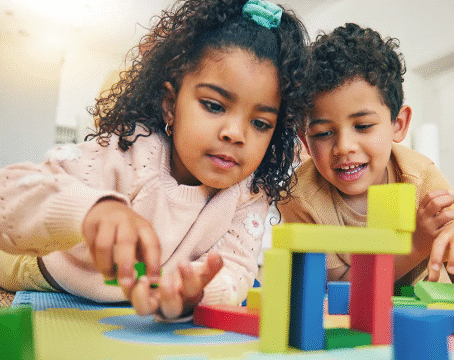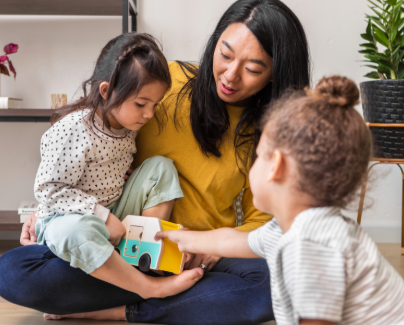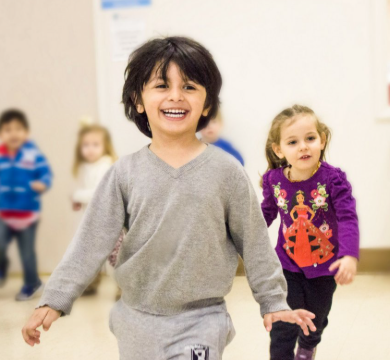Children thrive when they have structure in their daily lives. A routine offers them comfort, predictability, and a sense of stability, which is especially important during the years when they are learning and growing rapidly. Positive routines do not just keep the household running smoothly; they also create opportunities for bonding, learning, and building good habits that can last into adulthood. Developing these routines may take patience and consistency, but the rewards are worth it.
One of the first steps in building positive routines with kids is to think about their natural rhythms. Every child has moments in the day when they are more energetic, more focused, or more in need of rest. By observing these patterns, parents can design routines that work with their child’s natural flow instead of against it. For example, some children are more alert in the morning, making it the perfect time for activities like reading or schoolwork. Others may need more time to wake up gently and benefit from a slower start that includes quiet play before the day gets busier.
Morning routines often set the tone for the entire day. A calm and predictable start helps children feel ready for whatever lies ahead. Encouraging children to wake up, wash, get dressed, and enjoy a nourishing breakfast at a regular time helps them know what to expect and reduces morning stress for everyone. Parents can add small moments of connection, such as sharing something they are grateful for, or simply enjoying a few minutes of conversation together. These little touches make the routine not only practical but also meaningful.
After school or daycare, a routine can help children shift gears from structured learning to a more relaxed home environment. Having a predictable pattern of snack time, homework, and free play gives kids a balance of responsibility and relaxation. Children are more likely to complete tasks like homework when they know it comes before something they enjoy. Parents can reinforce this flow by staying consistent while still allowing some flexibility for special days or unexpected events.
Bedtime routines are among the most important. A consistent sequence of calming activities signals to the body and mind that it is time to rest. Whether it is taking a bath, brushing teeth, changing into pajamas, or reading a bedtime story, repeating the same steps every night provides children with comfort and security. This familiarity helps reduce resistance and makes it easier for children to settle down for sleep. Over time, a bedtime routine becomes a cherished ritual that both parents and children can look forward to.
While daily routines like mornings and bedtimes are essential, routines can also extend to other areas of life. Family mealtimes, for instance, offer a chance for connection and communication. Sitting down together at regular times helps children feel included and valued. It also provides an opportunity to model healthy eating habits and encourage conversations about the day. Similarly, routines around play, chores, and screen time give children a sense of balance and teach them how to manage different aspects of their lives.
When creating routines, it is important to involve children in the process whenever possible. Even young kids can help decide what order certain tasks should go in or choose a favorite bedtime story. Involving children gives them a sense of ownership and makes them more likely to follow through. It also teaches them decision-making skills and shows them that their opinions matter. For older children, this collaboration becomes even more important, as it encourages independence and responsibility.
Another helpful strategy is to keep routines simple and realistic. Overloading children with too many steps or expecting perfection can create stress instead of comfort. Routines should provide structure but still leave room for flexibility. Life is unpredictable, and children learn valuable lessons when they see that routines can adapt without falling apart. For example, a bedtime story might sometimes be shorter if the day runs late, but the key steps of preparing for bed remain consistent. This balance shows children that routines guide us without controlling us.
Positive routines are not only about tasks but also about the emotions that surround them. Adding joy, humor, and connection into routines makes them something to look forward to instead of a set of rules to follow. Singing a silly song while brushing teeth, making a game out of getting dressed, or sharing a fun story during meals can turn everyday routines into moments of happiness. These small efforts strengthen the parent-child bond and remind children that routines are about care, not control.
Consistency is the foundation of successful routines, but consistency does not mean rigidity. It is natural for families to face days that feel rushed, busy, or out of sync. What matters most is returning to the routine and reinforcing its value over time. Children learn through repetition, and they often need gentle reminders to stay on track. Patience is essential, as routines take time to establish. Parents may find it helpful to celebrate small successes along the way, such as a week of smooth bedtimes or a stress-free morning.
Another benefit of building routines is the sense of security they provide during times of change. When children experience transitions, such as starting school, moving to a new home, or welcoming a sibling, their routines can act as an anchor. The familiarity of regular habits reassures them and helps them cope with new situations. Even during uncertain times, a consistent routine shows children that some things remain steady and dependable.
As children grow, routines will naturally evolve. What works for a toddler may not work for a teenager, but the principle of structure and predictability remains the same. Parents can adapt routines to meet the changing needs of their children while keeping the core idea of balance, responsibility, and connection intact. In this way, routines become a lifelong skill rather than just a temporary tool.
Ultimately, building positive routines with kids is about creating a family environment where everyone feels supported, understood, and valued. These routines teach children how to manage their time, care for themselves, and participate in family life. They also create opportunities for parents to show love and guidance in small but meaningful ways every day.
By focusing on routines that combine structure with warmth, families can enjoy smoother days, more peaceful nights, and stronger relationships. It takes patience, creativity, and consistency, but the effort pays off with children who feel secure, confident, and ready to grow.






